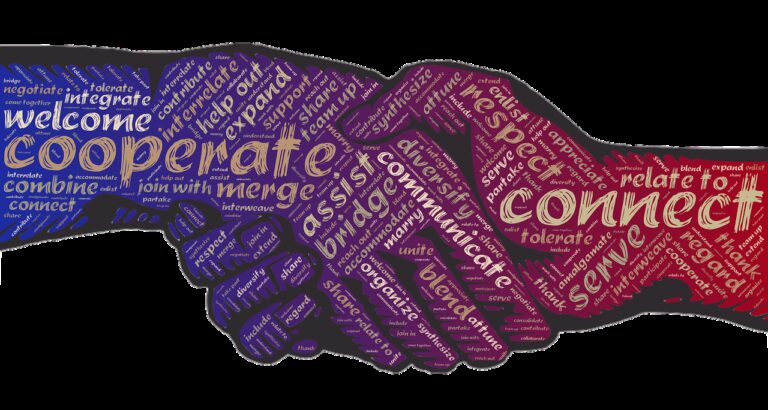Introduction
In any romantic relationship, sexual tension and chemistry are essential components that keep the spark alive. These two factors create a sense of excitement, anticipation, and attraction between partners that can make even mundane conversations feel electric. Sexual tension is the subtle feeling of attraction between two people that can lead to physical intimacy while chemistry in conversation is the intangible connection that exists between people.
For many couples, it is easy to become comfortable with each other over time and neglect these vital aspects of a relationship. However, actively creating and maintaining sexual tension and chemistry can help couples stay emotionally engaged and physically intimate with each other.
Explanation of Sexual Tension and Chemistry in Conversation
Sexual tension in conversation refers to the unspoken feelings of attraction or anticipation that exist between two people during their interactions. It may manifest as an undercurrent of energy or electricity, which builds up gradually over time or suddenly appear out of nowhere at any moment. On the other hand, chemistry in conversation is an intangible connection between two individuals brought about by shared interests, similar perspectives on life experiences, values or a dynamic exchange of ideas.
The feeling makes one want to be around someone else more often than not when they have great conversations together. Both sexual tension and chemistry are crucial pieces in building an intimate relationship as they provide partners with excitement and anticipation for what may come next in their relationship when conversing about various topics.
Importance of Creating Sexual Tension and Chemistry in Relationships
Creating sexual tension and chemistry should be an essential part of every romantic relationship regardless if it’s new or has been going on for years. It helps keep things interesting even after being together for an extended period as there’s always something new to learn from each other through conversation. The importance lies not only on physical intimacy but also emotional intimacy as well since both parties need to feel connected at all levels.
It brings about a sense of security and trust, which is vital for the relationship’s continuation. Creating sexual tension and chemistry in conversation should be an integral part of every relationship since it helps couples stay emotionally engaged and physically intimate with each other.
Nonverbal Techniques
Creating sexual tension and chemistry in conversation can be done through nonverbal techniques that involve body language, eye contact, and physical proximity. These techniques are powerful because they allow you to communicate without saying a single word. When done correctly, they can make someone feel attracted to you and create an atmosphere of sexual tension.
Eye Contact and Gaze
Eye contact is one of the most effective ways to create sexual chemistry with someone. When you’re talking to someone, maintaining eye contact shows that you’re interested in what they have to say and that you’re confident in yourself. However, it’s important not to stare for too long or come across as creepy.
Instead, try holding eye contact for a few seconds before looking away. Your gaze can also play a role in creating sexual tension.
When someone is attracted to another person, they tend to look at different parts of their body subconsciously such as their lips or chest. By directing your gaze towards these areas while maintaining eye contact, you may help build attraction between the two of you.
Body Language and Posture
Your body language can speak volumes about your confidence level and your interest in the other person during a conversation. For example, leaning forward slightly shows that you’re engaged and present in the conversation. Keeping an open posture by uncrossing your arms or legs also indicates that you’re open-minded towards the other person.
Mirroring the other person’s body language is another technique that helps create rapport with them quickly. It involves copying their movements such as crossing your legs when they cross theirs or taking a sip when they do so too.
Touching and Physical Proximity
Physical touch during any interaction enhances intimacy; however, it should be used cautiously and with appropriate timing during conversations with strangers or people we do not know well. During a conversation, physical proximity can also create sexual tension and chemistry by making the other person feel comfortable and at ease. Standing close to someone, or sitting next to them can create an intimate atmosphere.
Touching the person’s hand or arm when laughing at a joke may also help break the ice and build intimacy slowly. By using nonverbal techniques such as eye contact, body language, and physical proximity in your conversations, you can create sexual tension and chemistry almost effortlessly.
Knowing how to use each technique effectively is crucial in building attraction with someone you’re interested in. However, it’s important to remember that everyone responds differently so it’s essential to pay attention to their reactions while using these techniques.
Verbal Techniques
Creating sexual tension and chemistry through verbal techniques can be particularly effective in creating an intimate connection with someone. Through verbal communication, individuals can create a sense of attraction, interest, and intimacy that might not have been present before.
Flirting and Teasing
Flirting is a playful way of showing someone that you are interested in them. This technique is particularly effective in creating sexual tension as it allows individuals to express their attraction non-verbally while still maintaining a level of ambiguity. Teasing, on the other hand, involves playfully teasing someone about something they have said or done.
Both these techniques work well in creating sexual tension as they result in the development of playful banter between two individuals. Flirting and teasing allow individuals to show interest without being too direct or aggressive, enabling them to take things slow while still building up sexual tension.
Double Entendres and Innuendos
Double entendres and innuendos are phrases that have two meanings – one innocent interpretation and one with a more suggestive connotation. Using these types of statements during conversations can be an effective way to create sexual tension as it allows for humor while also conveying hidden meanings.
For instance, if you’re discussing food preferences with your crush, you could say something like “I love my meat juicy” – the statement has both literal and suggestive connotations that might lead your crush to laugh or become intrigued by what you meant. It’s important not to overuse this technique though; otherwise, it may come across as awkward or forced.
Using Suggestive Language
Using suggestive language during conversations involves using words that imply sexual undertones without being too direct or explicit. For example, instead of saying “I want to kiss you,” one could say “I am curious about how your lips feel.”
This technique allows individuals to express sexual desires without making the other person uncomfortable or feeling pressured. However, it’s essential to use suggestive language in moderation and ensure that the other person is receptive to these types of conversations.
Asking Open-Ended Questions
Asking open-ended questions is an effective way to create intimacy as it encourages individuals to share more about themselves. Instead of asking close-ended questions like “Do you like this movie?”, one can ask open-ended questions such as “What do you think about this movie?”. By asking open-ended questions, individuals can learn more about their crush’s interests, values, and opinions.
This technique creates a sense of vulnerability and openness that can lead to deeper conversations and increased sexual tension. Remember that the key is to listen actively and respond thoughtfully, building on what your crush has shared with you.
Emotional Techniques
Creating sexual tension and chemistry in conversation isn’t just about what you say or how you say it. It’s also about how you make the other person feel. Emotional techniques are all about creating the right atmosphere, mood, and emotional context for building sexual tension and chemistry with your partner.
Creating a sense of mystery
One of the most powerful ways to create sexual tension in conversation is to create a sense of mystery. This can be accomplished by being a little bit enigmatic and leaving your partner guessing about your intentions, thoughts, or feelings.
You can do this by being coy, indirect, or playful with your words. For example, instead of saying directly that you find someone attractive, you might say something like “I’m having trouble concentrating around you” or “You’re making me nervous.” These kinds of statements will create curiosity and intrigue in your partner’s mind and inspire them to try to figure out what’s really going on between the two of you.
Building anticipation through storytelling
Another powerful emotional technique for building sexual tension is storytelling. By telling stories that hint at past experiences or future possibilities, you can create a sense of anticipation that will keep your partner engaged and interested in what might happen next. For example, instead of just talking about what happened on your last date together, try telling a story that hints at something more exciting.
You might talk about a time when you took an impromptu road trip with friends but leave out some details that would make it clear whether or not there was any romantic involvement. This will leave your partner wondering if there was more to the story than meets the eye.
Sharing personal experiences to create intimacy
One often overlooked emotional technique for creating sexual tension is sharing personal experiences with each other. By opening up and sharing things that are important or meaningful to you, you can create a sense of intimacy and connection that is essential for building sexual chemistry. For example, you might talk about a time when you felt vulnerable or emotional and what that experience meant to you.
This will give your partner insight into your inner world and help them feel more connected to you on an emotional level. As a result, they’ll be more likely to trust you and feel comfortable opening up to you in return.
Timing Techniques
Timing is crucial when it comes to creating sexual tension and chemistry in a conversation. Knowing when to escalate the conversation can be the difference between building attraction and creeping someone out.
One key indicator that it might be time to escalate is if the other person is reciprocating your flirting and showing signs of interest. If they seem uncomfortable or disinterested, it’s best to take a step back and reassess.
Another important timing technique is pacing. It’s essential not to rush things; too much, too soon can be a major turnoff.
Instead, gradually build up the sexual tension over time by sprinkling in flirtatious comments or gestures throughout your conversations. Pay attention to how the other person responds; if they seem receptive, you can slowly increase the intensity of your flirting until you reach a level of chemistry that feels comfortable for both parties.
Knowing When to Escalate
Knowing when to take things up a notch can be tricky but paying attention to nonverbal cues such as body language and tone of voice can help guide you in the right direction. If you notice that the other person is leaning in closer, making prolonged eye contact or touching their hair or face while blushing, these are good signs that they’re interested in escalating things further.
It’s important when escalating things romantically not only lead with physical advances but also emotional ones too. Demonstrating vulnerability by opening yourself up about personal experiences allows for greater connection between two people leading towards more intimate conversations.
Paying Attention to Responses
Paying attention to how someone responds at every stage of flirting or romantic escalation is just as important as knowing when to escalate because it helps determine whether they’re still interested or comfortable with where things are going. If they seem hesitant or uncomfortable, then it’s time to back off and reassess what went wrong- was it the timing or the approach?
It’s important to listen actively and ask open-ended questions to gauge interest. If they seem receptive, then it’s safe to ramp up your flirting and escalate things further.
If not, it’s best to take a step back and regroup. Remember, building sexual tension is all about creating a comfortable space for both parties to explore their feelings without any pressure or discomfort.
Cultural Considerations
Cultural norms and societal expectations around sexuality and flirting can vary greatly among different countries and communities. Being aware of these differences is key to creating sexual tension and chemistry in conversation without offending or disrespecting the other person’s cultural values.
Sexuality Norms
In some cultures, talking openly about sex is considered taboo or inappropriate, while in others, it may be seen as a natural part of the conversation. For example, in many Western cultures, sexual innuendos and suggestive language may be used more freely in flirting conversations.
However, in certain conservative cultures, such as some Middle Eastern countries or parts of Asia, discussing sex too openly can be seen as disrespectful or even illegal. It’s important to do research on the specific cultural norms before engaging in flirtatious conversation with someone from a different culture.
This can involve learning about certain phrases or words that might be considered vulgar or inappropriate in that culture. It’s also important to be respectful of the other person’s boundaries and comfort level around discuss matters relating to sexuality.
Flirting Norms
Just like with sexuality norms, flirting norms also differ greatly across cultures. In some cultures, such as Latin American countries, it’s common for people to use physical touch as a way of expressing affection or interest.
In contrast, some East Asian cultures may view physical touch during flirting as intrusive. Additionally, different cultures have different expectations regarding gender roles and how they relate to flirting behavior.
For example, traditional gender roles that are prevalent in many Middle Eastern societies dictate that women should not engage in flirtatious behavior with men outside their family group. Understanding these cultural nuances is key for effective communication when trying to build sexual tension through conversation.
Understanding cultural differences is crucial when trying to create sexual tension and chemistry through conversation with someone from a different culture than your own. Doing so can help prevent misunderstandings and ensure that the conversation is respectful, enjoyable, and mutually satisfying for both parties involved.
Conclusion
Creating sexual tension and chemistry in conversation can be an art form that takes practice and skill. It’s important to remember that creating sexual tension should always be done with respect and consideration for the other person’s boundaries.
With that being said, there are many techniques that can be used to create attraction and chemistry in conversation. Nonverbal techniques such as eye contact, body language, and touch can communicate a lot without saying anything at all.
Verbal techniques like flirting, teasing, double entendres, and suggestive language can create a playful and exciting dynamic in conversation. Emotional techniques like storytelling and sharing personal experiences can build intimacy and connection between two people.
Timing is also key – knowing when to escalate the conversation or back off is important for maintaining balance. It’s also important to consider cultural norms around sexuality and flirting when engaging with someone from a different background or culture.
Ultimately, creating sexual tension in conversation is about creating a fun, playful energy between two people that makes them excited to spend time together in the future. With practice and attention to detail, anyone can learn how to create this dynamic in their conversations with others.






